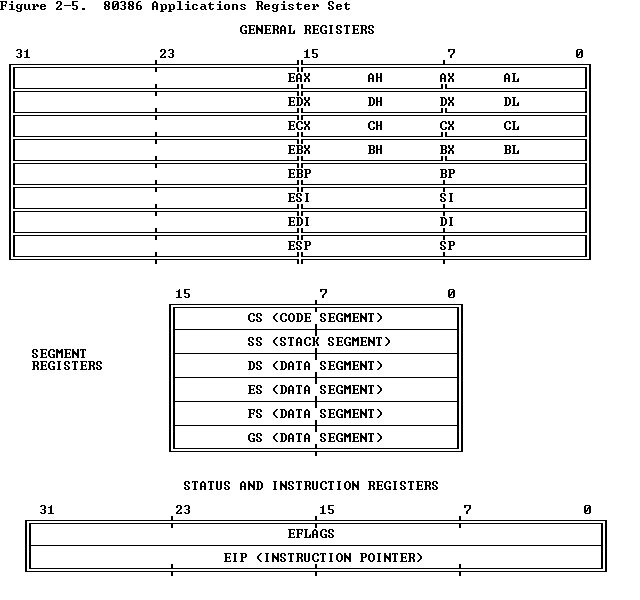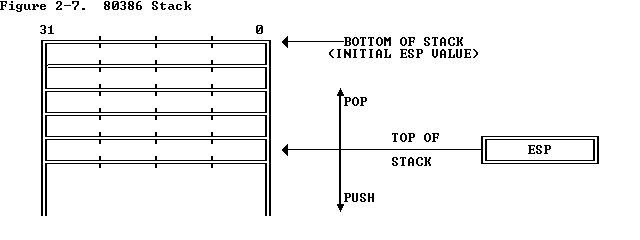
The low-order 16 bits of EFLAGS is named FLAGS and can be treated as a
unit. This feature is useful when executing 8086 and 80286 code, because
this part of EFLAGS is identical to the FLAGS register of the 8086 and the
80286.
The flags may be considered in three groups: the status flags, the control
flags, and the systems flags. Discussion of the systems flags is delayed
until Part II.
As
Figure 2-9
shows, the low-order 16 bits of EIP is named IP and can be
used by the processor as a unit. This feature is useful when executing
instructions designed for the 8086 and 80286 processors.
up:
Chapter 2 -- Basic Programming Model
2.3.3 Stack Implementation
Stack operations are facilitated by three registers:

2.3.4 Flags Register
The flags register is a 32-bit register named EFLAGS.
Figure 2-8
defines
the bits within this register. The flags control certain operations and
indicate the status of the 80386.

2.3.4.1 Status Flags
The status flags of the EFLAGS register allow the results of one
instruction to influence later instructions. The arithmetic instructions use
OF, SF, ZF, AF, PF, and CF. The SCAS (Scan String), CMPS (Compare String),
and LOOP instructions use ZF to signal that their operations are complete.
There are instructions to set, clear, and complement CF before execution of
an arithmetic instruction. Refer to Appendix C for definition of each
status flag.
2.3.4.2 Control Flag
The control flag DF of the EFLAGS register controls string instructions.
DF (Direction Flag, bit 10)
Setting DF causes string instructions to auto-decrement; that is, to
process strings from high addresses to low addresses. Clearing DF causes
string instructions to auto-increment, or to process strings from low
addresses to high addresses.
2.3.4.3 Instruction Pointer
The instruction pointer register (EIP) contains the offset address,
relative to the start of the current code segment, of the next sequential
instruction to be executed. The instruction pointer is not directly visible
to the programmer; it is controlled implicitly by control-transfer
instructions, interrupts, and exceptions.

prev: 2.2 Data Types
next: 2.4 Instruction Format